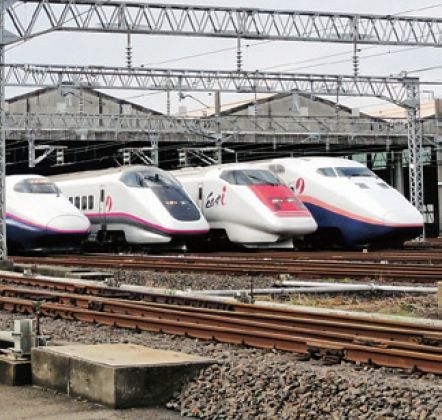Japan eyes big ticket projects in India
Finance and skill development would be key issues for projects being looked at by Japan and China
In some ways, the deal with Japan for setting up India’s first bullet
train was almost decided when the election results of Bihar were
out. The electoral defeat bjp suffered pointed to just one strategy that could make a difference for the ruling party – accelerate investments in India; create more jobs; and let economic development erase all the bad publicity and setbacks the party had
suffered during the past 6-8 months.
Officials in Japan were, however, apprehensive. They were nervous
about the India deal because they had just lost the Shinkansen deal in Indonesia. Could India also go the same way? Japan could not afford to lose this deal. At stake was Japan’s own Asia strategy, and the need to counter China’s aggressive wooing of Asian projects.
There was also another type of lobbying that was underway. Makers
of conventional trains had been telling government officials and opinion leaders that India’s choice of high speed railways was all wrong. These tracks were dedicated only to passengers. What India needed were trains that could use the same tracks for passenger and freight.
In some ways, the Indonesia deal did not really matter much to Japan. It was for a mere 180 km stretch between Jakarta and Bandung. This was far shorter than the 515.4 km Tokyo-Osaka-Shinkansen line – the first ever to be set up in the world in 1964. Japan believed that the ideal distance to be covered – for the maximum benefit – would have to be about 500 km. And this is what made the Ahmedabad-Mumbai stretch perfect for the plans that Japan had.
But the Indonesian loss stung, nonetheless. One of the reasons China wrested this project from Japan was that it decided to go ahead without a loan guarantee from Indonesia’s government. One Indonesian government official went on record stating that the “financial package offered by the Chinese is more interesting than the Japanese”.
Perhaps that is why Japan decided to use another strategy to win the
Indian project. It offered a loan package that China just could not
match. “High speed rail is an expensive proposition,” says Arvind Panagariya, vice-chairman, Niti-Aayog, and head of the panel, which went into the contours of the ‘high speed railway’ (HSR) offer to India. “So, what kind of finance the Japanese are willing to bring to the table is important.” And it looked incredibly attractive. The offer included a 40-year loan, where there were no payments for 10 years and only 0.3 per cent a year after that – in short, a highly concessional loan.
Great package
The Chinese were not offering anything close to that. When the final package was disclosed, as part of the trip Japan’s prime minister Shinzo Abe made to India, the ¥2 trillion project (Rs.98,000 crore) involved a loan of about Rs.78,000 crore (81 per cent of the project cost) through JICA for a 50-year tenure, with a moratorium of
15 years. According to some sources, even the interest rate had been further slashed to 0.1 per cent, though this could not be confirmed.
“In 50 years, India’s economy would be $20 trillion with organic
growth of 7.5 per cent,” says Suresh Prabhu, Union minister for railways. “We have to create the awareness in people that you can’t reach that level unless you invest in infrastructure.”
“No less historic is the decision to introduce high-speed rail on the
Mumbai-Ahmedabad sector through Shinkansen, which is known for
speed, reliability and safety,” said Prime Minister Narendra Modi, commenting on the Shinkansen project. He called Japan’s financial package ‘extraordinary’, which included technical assistance on easy terms for the project.
With this deal being clinched and signed, the next round of competition should swing to the 2,200 km Delhi-Chennai corridor, for which China has been awarded the contract for a similar feasibility study. Likewise, there is a feasibility study underway for the 1,200-km Delhi-Mumbai corridor. China has also offered to train Indian Railways’ engineers in heavy haulage and setting up a rail university.
But, then, Japan too has begun to focus on human resources development and women’s empowerment. Prabhu also commented on Japan helping India in R&D. “The Indian side appreciated Japan’s support to Skill India Initiative through training at Industrial Training Institutions (ITIs), skills development for managers, curriculum development and the Skills Evaluation System Promotion Programme,” stated the joint statement, prepared by the Indian
and Japanese representatives at the end of Abe’s trip to India.
“China, which is pushing for its investment in big ticket infrastructure
projects in India like the high-speed train, should make its loans
more attractive,” Panagariya says. It is quite possible that the next round of talks will pay more attention to that. “Finance and skill development could be key issues for the next projects being eyed by both Japan and China,” Panagariya adds.
The pdf version of the article can be accessed from here 2016-01-04_BizIndia-Japan-financing-big-ticket-items
This article appeared on page 84 of the Jan 4-17 issue of BusinessIndia










































COMMENTS